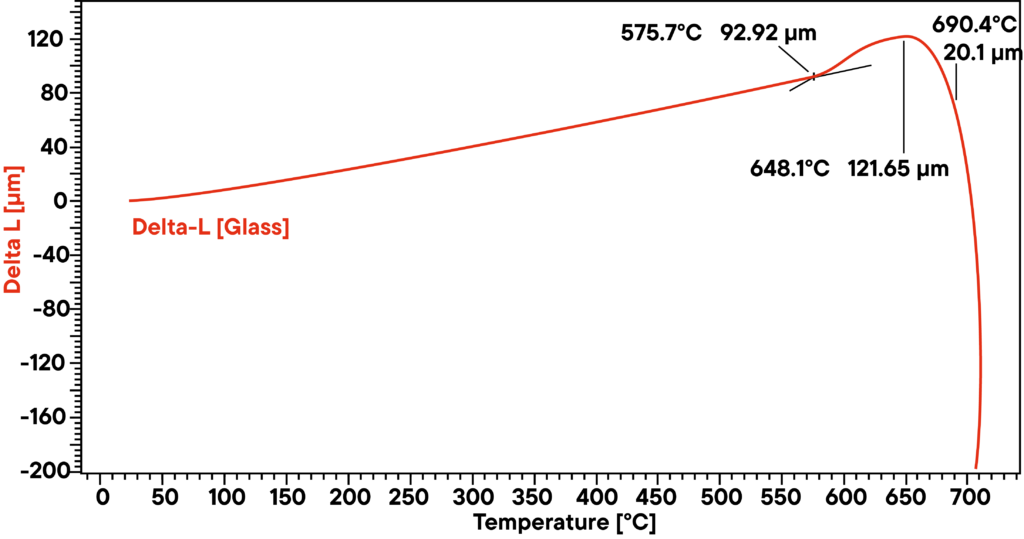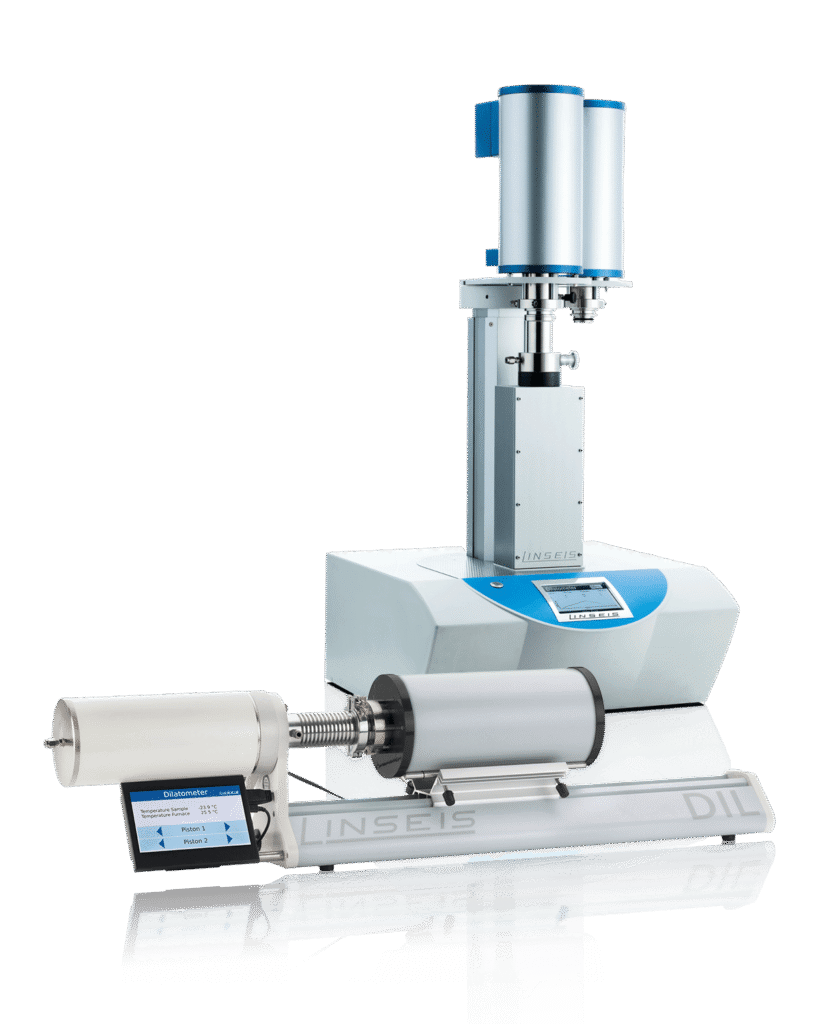Glasses are a very unique kind of material. They usually exist as an amorphous solid, which means they are a non-crystalline material that is not liquid at all because their molecules are in a fixes structure but not crystal-structure.
As a consequence, they have some properties that are also very unique like their transparency and their considerable low degree of thermal expansion and low thermal expansion coefficient (CTE).
Even if it seems logical that they might have a low melting point due to their amorphous nature, they keep their mechanical properties up to a quite high temperature, making them an ideal construction material since the early beginning of human cultures.
Of course, nowadays there are many special glasses available, each one providing its own special properties for its special application purpose. Therefore, it is important to know the exact behavior of each species.

A glass rod sample was measured by pushrod dilatometry. The sample shows linear expansion up to around 575°C, followed by a sudden increase of expansion. This is the typical behavior of many glass samples. Before they reach a maximum of expansion, immediately before the melting starts, they show this change in expansion rate, which symbolizes their glass point. After reaching the maximum of expansion, the glass starts to melt, so the maximum can be defined as softening or melting point.

